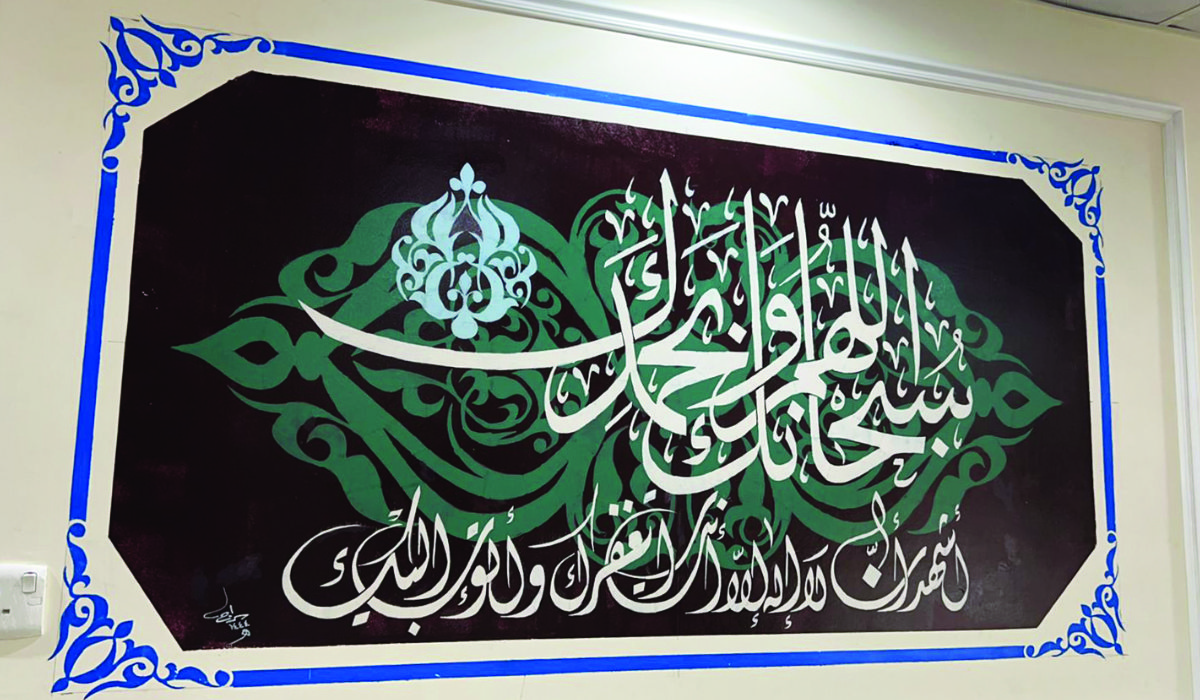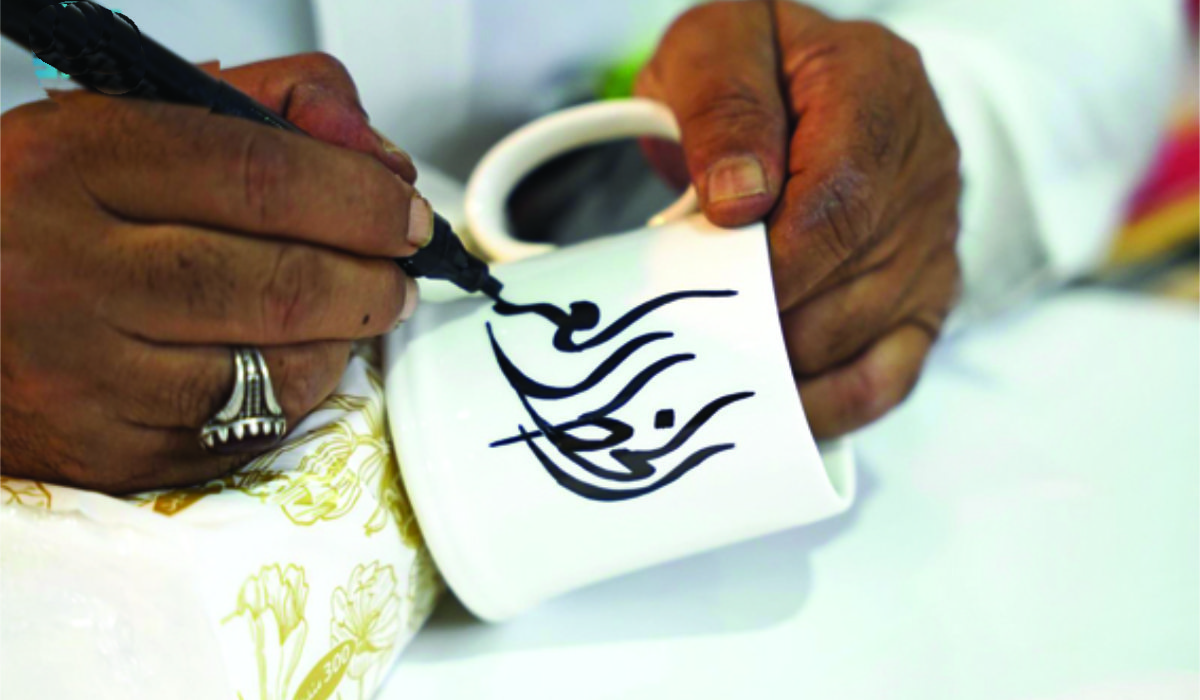MAKKAH: Saudi calligrapher Siraj Al-Omari’s skills have captivated thousands as his style has impacted audiences “whether in the southern region, across the Kingdom, the Arab world and the entire globe.”
At the Al-Majaridah Winter Festival — taking place in the Al-Majaridah Governorate of the Asir region until Feb. 22 — Al-Omari is encouraging a new generation of Saudis to embrace the ancient art of writing.
Al-Omari highlighted the universal allure of Arabic calligraphy, transcending language barriers to captivate those who do not speak or understand Arabic.

Saudi calligrapher Siraj Al-Omari, who hails from Al-Namas city in Asir region, said the mountains and forests and the shapes and colors in nature inspire his work. (SPA)
He described its impact as beautiful and enchanting, adding that Arabic calligraphy is an art form governed by angles, points, and direction — a skill that requires learning rather than solely relying on innate talent.
“The foundations equally attract dedicated practitioners in Turkey, Persia and Kurdistan,” he said. Al-Omari gives live online tutorials to followers in Europe, North Africa, Pakistan and China.
HIGHLIGHTS
• Master calligrapher Siraj Al-Omari gives live online tutorials to followers in Europe, North Africa, Pakistan and China.
• A Parker 21 pen - gifted by his brother - opened up the world of calligraphy for Al-Omari.
• He received guidance from Mokhtar Alam, a renowned calligrapher celebrated for his work on the kiswa (covering) of the Kaaba.
• He is licensed in Diwani, Farisi and Jali Diwani styles.
Reflecting on his journey, Al-Omari told Arab News: “My connection with calligraphy predates formal education, with the first inklings of my bond with these beautiful letters emerging. I eagerly awaited my older brother’s return from school to appraise my scribbles.”
He fondly recalls the moment his passion for calligraphy was sparked at a young age. “One day, my older brother surprised me by gifting me a Parker 21 pen. It was the best gift I had ever received — my entry point into the world of calligraphy,” he said.

Saudi calligrapher Siraj Al-Omari, who hails from Al-Namas city in Asir region, said the mountains and forests and the shapes and colors in nature inspire his work. (SPA)
“With that pen, I could translate my fascination with letters into tangible works of beauty and precision. I loved that pen so much that I still have it to this day. It carries memories of childhood inspiration that set me on this path.”
Recalling the early stages of replicating characters from textbooks, Al-Omari underscored how this endeavor fortified his reading and writing skills. His pre-grade one immersion in calligraphy and achievement of complete literacy before starting formal education surprised teachers on his very first day of school.
I feel the talent I have does not belong to me but is a right for everyone to learn from and benefit.
Siraj Al-Omari, Saudi calligrapher
Al-Omari, who will soon turn 60, reminisced about his time in the fourth grade at Saad Ibn Abi Waqqas School in the village of Al-Muqbil. Teachers would ask him to inscribe notes in his elegant handwriting. Having mastered the graceful curves and dots of Arabic letters, his skill earned admiration and cemented his reputation as a model student.
The prominent calligrapher, who hails from Al-Namas city in Asir region, said the local environment of mountains and forests filled his imagination, adding that the interplay of shapes and colors in nature translated into creative inspiration. “When you live among valleys and mountains, you are prepared for writing and creativity,” he said.
Al-Omari added: “Drawing is an advanced art that must amaze others, and Arabic calligraphy serves as its foundation. The better the foundation, the better the calligraphy, leading to captivating artwork that resonates with others.”
His foray into professionalism took shape under the guidance of Mokhtar Alam, a renowned calligrapher celebrated for his work on the kiswa (covering) of the Kaaba.
Despite lacking formal education in calligraphy, Al-Omari’s encounter with Alam in Jazan left a lasting impact, fostering a strong bond.
Regular visits to Makkah and direct interactions with prominent calligraphers like Ibrahim Al-Iraqi and Nasser Al-Maymoun led to licenses in various calligraphy styles, namely Diwani, Farisi and Jali Diwani.
Rather than keep his rare gift to himself, Al-Omari’s calling has always been to share his talent without restraint. “I feel the talent I have does not belong to me but is a right for everyone to learn from and benefit,” he said.
Al-Omari sees Arabic calligraphy as a practice intertwined with excellence in language and academics. The dedication required to master calligraphy demands focus and artistic vision. “When you devote your life to calligraphy, you practice writing and thus excel in spelling,” he said.




















